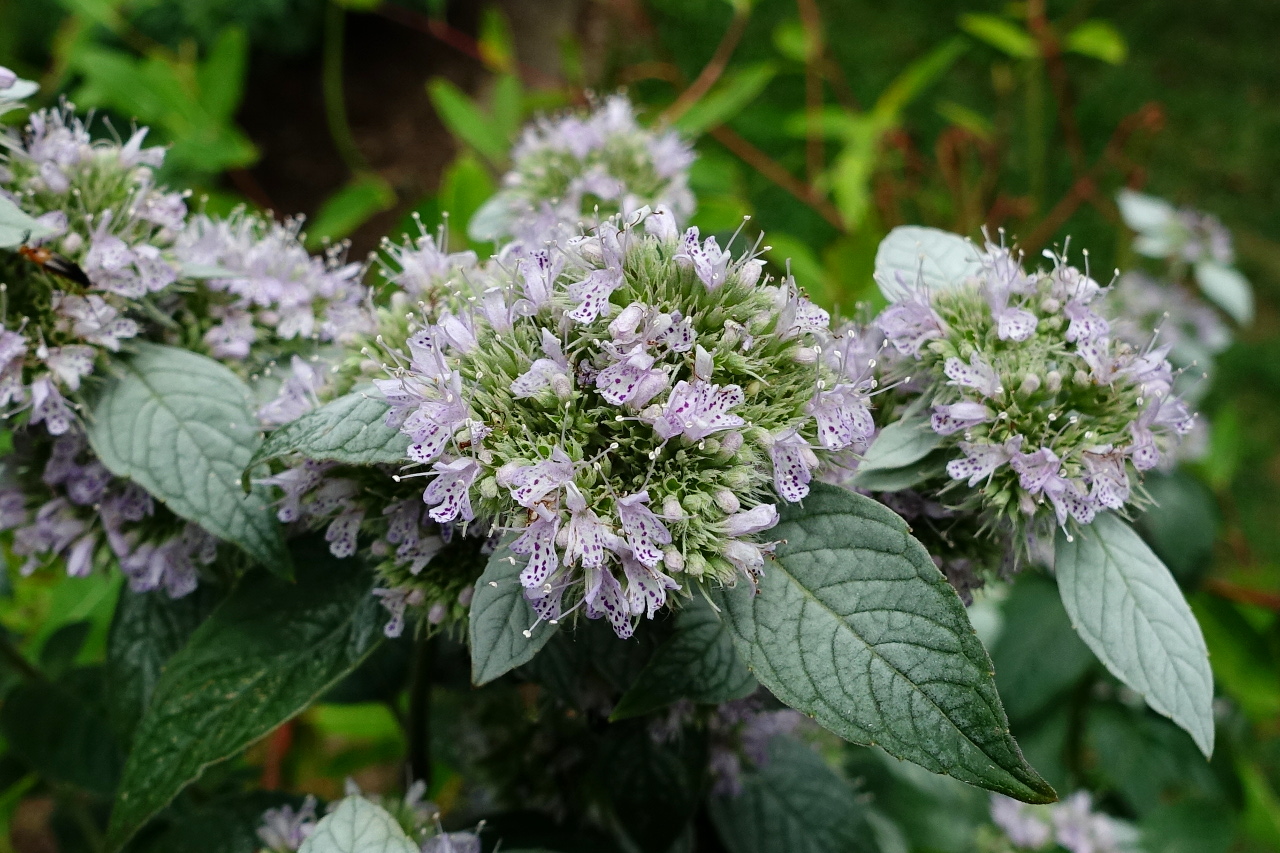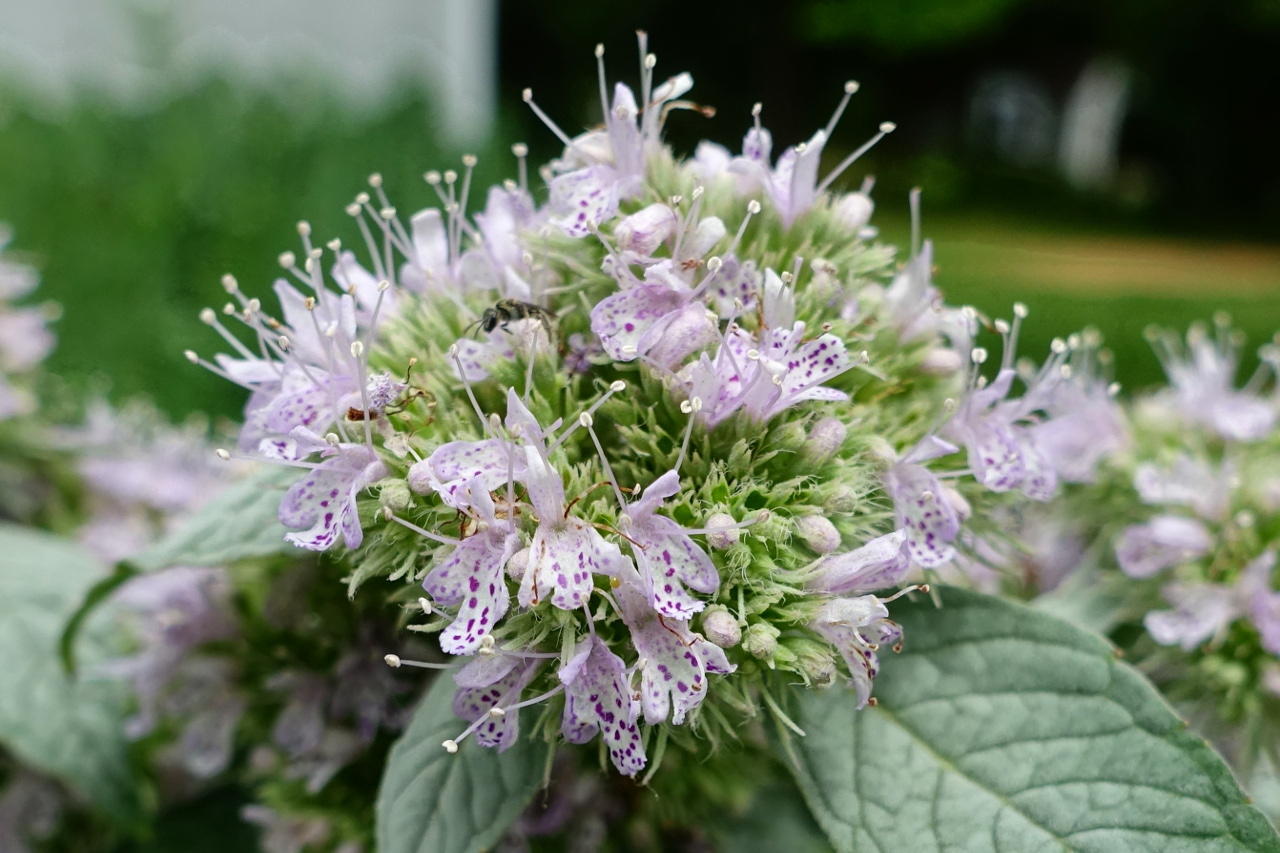
They also provide habitat for phytoplankton, which play an important role in nutrient removal (Ogle and Hoag 2000). Emergent plants are important for wildlife and evapotranspiration. This zone is most common to Swale designs from the center of the Swale to, typically, the water quality stage elevation. It is often designed as benches within ponds to optimize the area for emergent plants. Zone 2 (Emergent zone) – The emergent zone of a wet pond is generally 0 to 18 inches deep. Many submergent species establish on their own (Ogle and Hoag 2000). Submergent species are not readily available from native plant nurseries and can be difficult to plant. Submergent species are important for wildlife habitat and pollutant removal, especially nitrates and phosphorus.

Pycnanthemum virginianum free#
Submergent species may float free in the water column or may root in the pool bottom and have stems and leaves that generally stay under water. Submergent vegetation makes up this zone because emergent vegetation generally does not grow deeper than 3 feet. Therefore, it is an unlikely zone to include in a Swale design, though exceptions may occur. Zone 1 (Submergent zone) – The submergent zone is found in areas of 3-6 feet of water in wet ponds. Zone 5:Upland zone seldom or never inundated (the upland zone includes prairie and forest plant communities).Zone 4: Floodplain zone flooded during snowmelt and large storms.Zone 3: Wet meadow zone permanent moistue.Zone 2: Emergent zone 0 to 18 inches of water.Zone 1: Submergent zone 1.5 to 6 feet of water.To obtain a free copy of this guidebook, telephone (651) 297-8679 or write to Operations and Environmental Review Section, Regional Environmental Management Division, Minnesota Pollution Control Agency, 520 Lafayette Rd. The tables and content on this page have been adapted from “Plants for Stormwater Design: Species Selection for the Upper Midwest” (Daniel Shaw and Rusty Schmidt, Minnesota Pollution Control Agency, 2003). See the section Green Stormwater Infrastructure (GSI) and sustainable stormwater management. Depending on design and construction, swales may provide additional benefits, including cleaner air, carbon sequestration, improved biological habitat, and aesthetic value. New York flora atlas.Green Infrastructure: Swales can be an important tool for retention and detention of stormwater runoff. University of Pennsylvania Press: Philadelphia, Pennsylvania. The Plants of Pennsylvania: An Illustrated Manual. New York Natural Heritage Program, New York State Department of Environmental Conservation. Ecological communities of New York State. Newcomb's Wildflower Guide: An Ingenious New Key System for Quick, Positive Field Identification of the Wildflowers, Flowering Shrubs, and Vines of Northeastern and North-Central North America. New York Natural Heritage Program Databases. Contributions to a Flora of New York State. Revised Checklist of New York State Plants. The New York Botanical Garden, Bronx, New York. Illustrations of the Vascular Plants of Northeastern United States and Adjacent Canada. The Illustrated Companion to Gleason and Cronquist's Manual.
Pycnanthemum virginianum manual#
Manual of Vascular Plants of Northeastern United States and Adjacent Canada. Whorled Mountain-mint flowers from July through August, and the fruits may persist into mid-October.įernald, M.L. Pycnanthemum virginianum stems are pubescent only on the angles (Rhoads and Block 2000). torrei also has longer (1 to 1.5 mm) and sharper calyx teeth (Gleason and Cronquist 1991). Pycnanthemum torrei has leaves and bracts which are glabrous on the upper surface, and softer and less veiny than those of P. Specimens with stems, leaves, and either flowers or mature fruit are needed to identify this species.

Best Life Stage for Proper Identification Its leaves are pubescent throughout their lower surfaces. pilosum, a non-native variety, has been reported from Wayne County.

Variety verticillatum is the only native variety of Whorled Mountain-mint found in New York. The teeth of the sepals (calyx) are narrowly triangular, acuminate, and. The flowers are crowded into numerous heads 8 to 15 mm thick, and subtended by leaf-like bracts They are white, and two-lobed, the lower lobe purple-spotted. The leaves are narrowly lance-shaped, 3-5 cm long and only 8-12 mm wide, with an acute tip, and hairy only along the veins of the lower surface. Like other Mountain-mints it is strongly aromatic, such that a strong spearmint odor from the leaves may be the explorer's first clue to its presence. verticillatum is a rhizomatous herb with branching, square stems up to 1.5 m tall the stems minutely pubescent throughout. Identification Comments General Description


 0 kommentar(er)
0 kommentar(er)
